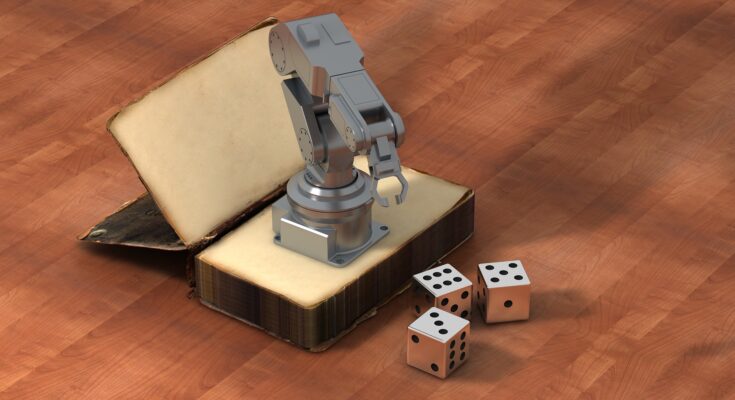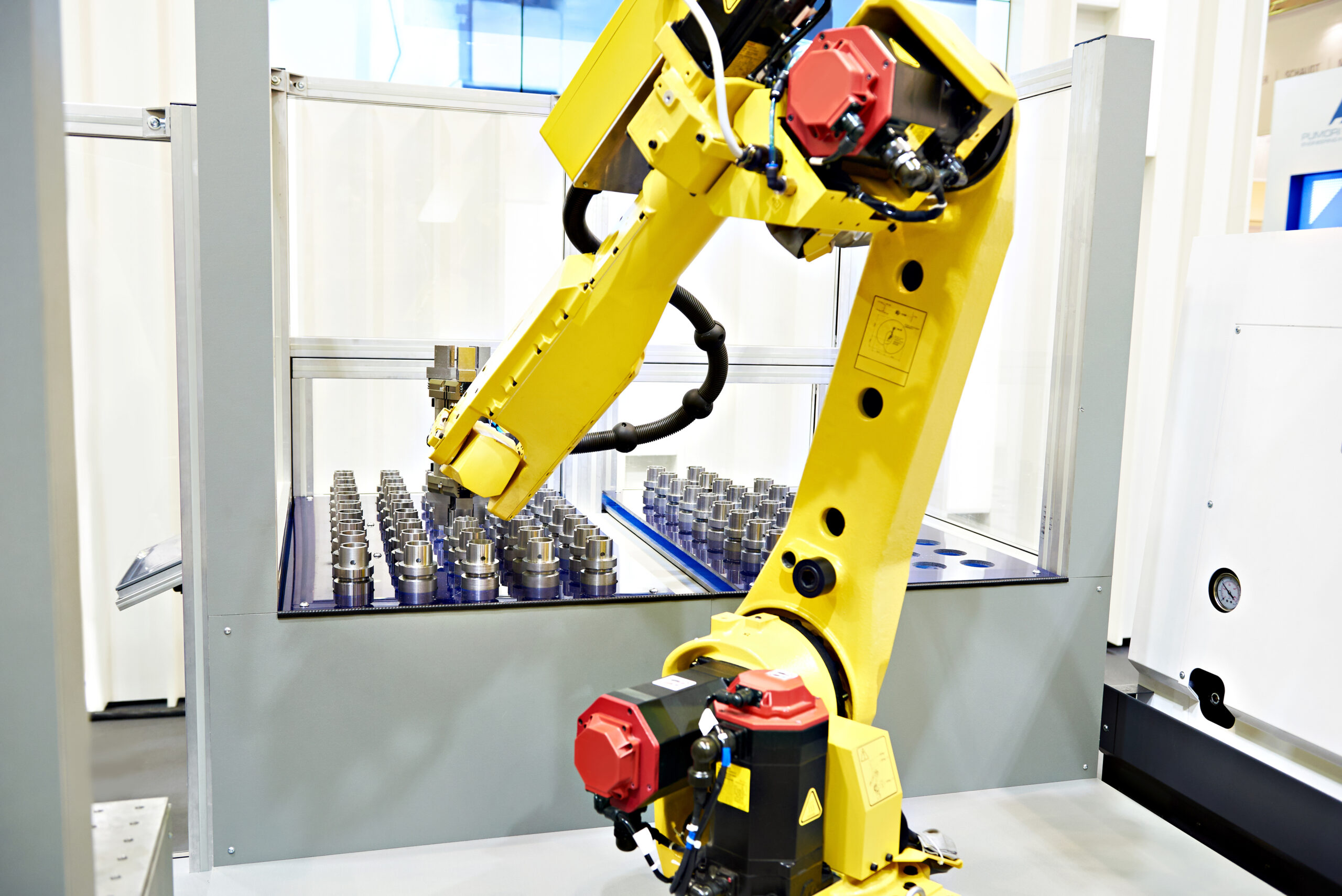You have parts or objects that you need to sort, stack, or order. A pick and place robot could be the answer…
But, what do you need to know before getting started with pick and place robots?
Here is the ultimate guide for beginners.
Pick and place is probably the most common application in robotics these days. It’s certainly extremely popular. Whether you’re moving boxes, bottles, bricks, blocks, or bags, there is almost certainly a pick and place robot to suit your needs.
And that’s the problem.
There are so many options when it comes to pick and place robotics. Many robot models are suitable and it’s not always obvious which robot is the best one for you.
You might not even have reached the point of picking a robot model. Maybe you’re still wondering if robots are the right option for your pick and place task.
If you’re looking for a fundamental introduction to pick and place robots, this guide is for you.
What Are Pick and Place Robots?
A pick and place robot is any robot that can pick up an object from one location and drop it in another. They are used for a wide variety of tasks in manufacturing and other industries, including sorting, stacking, moving, and packaging products.
This wide definition applies to most robot models so there is no specific “pick and place robot” that is always used for this type of task. However, some types (such as Delta robots) are more commonly used for pick and place than others.
Without Robots: The Alternatives for Pick and Place Automation
You might wonder if a robot is even the right option for your pick and place task. There are certainly other options that don’t require the use of multi-axis robots.
A common alternative is to use dedicated pick and place machines. These are highly accurate machines that are used widely in the electronics industry for placing components onto surface mount circuit boards. They are fast, precise, and consistent for this type of task.
The problem with pick and place machines is that they are inflexible. They are great for high-volume, highly-consistent product lines that require manipulation of small items, as is the case with the manufacturing of computer circuits. However, such machines are too restrictive, expensive, and unsuitable for most pick and place tasks.
If you want to automate a pick and place task, the best option will usually be to use a robot.
The only other alternative is to do the task manually.
5 Great Benefits of Using a Robot for Pick and Place
Using a robot for pick and place has some significant benefits when compared to manual pick and place:
- Throughput — The most obvious benefit is increased throughput. A robot will be able to consistently pick and place more objects than a human operator and can operate round the clock to increase throughput further.
- Safety — Less obvious is that using a robot is safer than having humans move the objects. Repetitive motions such as those required by pick and place can cause musculoskeletal problems over time.
- Speed — Most robots will be much faster than humans at pick and place tasks, some significantly faster. Even those robots that are slower than humans (e.g. many collaborative robots) will be able to keep up their speed consistently.
- Consistency — The most impactive benefit of all robots is that they are more consistent than humans. A robot will always pick and place items in the same way.
- Return on Investment — The return on a pick and place task can come very quickly as such tasks can usually be calculated by the amount it would have cost to hire a human to perform the same task.
6 Robots That Are Suitable for Pick and Place (and What They’re Good For)
Although the vast majority of robots are compatible with pick and place tasks, some are better suited than others for particular types of pick and place.
Here are 6 of the most common:
1. 6-axis Industrial Arms
The most versatile type of robot, 6-axis industrial robots range from tiny to huge. As a result, they can pick and place almost any object you can think of.
2. Cartesian
Cartesian or gantry robots have a rectangular work envelope and are often highly precise. They are also the most rigid robots. As a result, large gantry robots are well-suited to pick and place of very heavy items.
3. Delta
The common choice for high-speed pick and place, delta robots are extremely fast. They don’t have a high payload, but their speed makes them very popular.
4. Collaborative
Collaborative robots are mostly useful for slow pick and place tasks where low throughput is acceptable — e.g. for small-batch tasks that would otherwise have to be done manually.
5. Palletizing
Palletizing is a very particular robot task and it is an extension of pick and place. It involves layering items onto a pallet. Palletizing robots are specially designed to handle this task.
6. SCARA
A very popular choice for small pick and place tasks in the electronics industry, SCARA robots are fast and accurate, though not as fast as delta robots. They take up less space than many of the other options due to their small size.
How to Program a Pick and Place Robot Quickly and Easily
Whatever type of robot you use, you want to be able to program it as easily as possible. This is easier with some types of robots than others.
However, whatever robot you are using, the robot programming can become easy if you choose the right programming system.
We have a free webinar about how to program pick and place tasks quickly and easily using RoboDK. Just click here to watch the webinar.
What aspect of pick and place robotics would you like to know more about? Tell us in the comments below or join the discussion on LinkedIn, Twitter, Facebook, Instagram, or in the RoboDK Forum.




